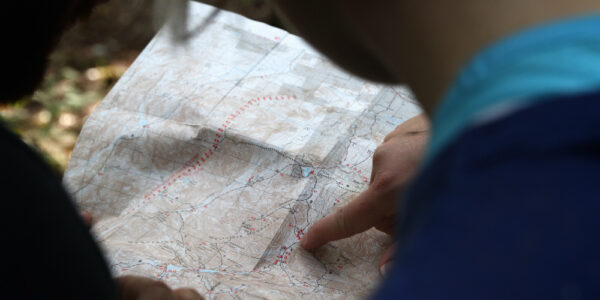How Customer Journey Mapping Strengthens Your Marketing

Your customer zigs. Your customer zags. With just about any purchase process, whether we’re talking B2B or B2C, your customer is zigging and zagging, and zagging and zigging, their way to their final purchase decision.
Offline, online, owned digital assets, third-party websites, earned media, it makes no difference. To your customer, there are no “channels” anymore. Their brains are not registering whether your message was delivered digitally, or at a trade show, or in a publication. Every brand touchpoint is exactly that – a brand touchpoint. Each touchpoint influences how they feel about you and your products/services.
It’s the accumulation of these diverse experiences that guides them to either include you or subtract you from their consideration set. Ultimately, this also leads them to their final decision of whether to purchase from you, from your competition, or to maintain the status quo and not make a purchase at all. With this in mind, let’s dive into the nuts & bolts of customer journey mapping to help you strengthen your marketing throughout the journey, capture more customers and drive more revenue.
Customer Experience Is The New Black
According to the Customers 2020 report by the customer intelligence firm Walker Information, customer experience will overtake price and product as the key brand differentiator by the year 2020. This differentiation translates into real revenue. Forrester has conducted numerous studies showing significant revenue increases (in certain cases over $1 billion in incremental annual revenue) that companies achieve when customer experience is improved.
The bottom line is this. Deliver a poor experience at any point along the customer journey, and you’re in for a rude awakening. Deliver a stellar experience, and you may have a new customer for many years to come, and that new customer often influences others to become your customer for many years to come, as well. Delivering an exceptional customer experience is now critical for a successful marketing strategy, and what better way to ensure a great experience than a customer journey map?
Getting Started With Customer Journey Mapping
Your customer goes through a process prior to purchasing your products or services. A great place to start understanding their experience throughout that process is a customer journey map. It’s through a thorough understanding that you can start to improve the experience and better fulfill your customers’ wants and needs.
What better way to get into the heart and mind of your customer than by mapping the experience? Customer journey maps give greater insights into the different stages of the purchase funnel, and into how your customers think during each stage of the sale.
Visually mapping a customer’s relationship with your organization or product brings awareness of what your customer is seeing, feeling and experiencing. A customer journey map highlights the experience from the customer’s perspective, while outlining user expectations and business requirements. This formula creates transparency that avoids the damage to your business that comes from not concisely recognizing a customer’s point of view.
A Unique Journey for Every Persona
For most businesses, you don’t have just one target audience, but instead you have multiple audience segments. In the case that you sell security software, for example, you may segment your audience by vertical or by company size. In the case that you are a law firm specializing in real estate law, your audiences may include developers, real estate agencies, estate managers, businesses and individual home buyers. And within each audience segment, you may be dealing with distinct buyer personas. Among any particular segment, you may have younger vs. older buyers, or U.S. vs. international prospects, or Alpha Dogs vs. followers, etc.
Just as you would not message your different audience segments and personas in the same way, why would your customer journey map be the same for each? The one-size-fits-all model doesn’t work with customer journey maps. Instead, develop a unique map for each target. The more each map is uniquely aligned to the mindset of each audience segment and/or persona, the stronger your messaging will resonate with each prospective customer and convince to them why you are uniquely the best option for them.
Customer Journey Mapping as “Experience Design”
As a customer zigs and zags through the purchase process, they become invested on many levels. Given that 90% of purchase decisions are made by the subconscious mind (Source: Nielsen), the importance of triggering the right neural signals in your customers with each brand touchpoint cannot be stressed enough.
Think of customer journey mapping as “Experience Design”. The path to purchase is not a straight line, and with that in mind, it’s critical to think, plan and execute holistically. From awareness building, to sparking their imagination, convincing them of your value and enhancing the post-purchase process, you are a designer of experiences across every potential touchpoint.
Elements of an Effective Customer Journey Map
The key elements of a customer journey map include:
- Audience Segments & Personas. Understanding the thoughts, desires and expectations of each audience segment and each unique customer persona is fundamental in developing your marketing and messaging in a way that resonates on a deeper, subconscious level.
- Funnels. Identifying how the customer was lead to a brand touchpoint is key to understanding your top-of-the-funnel drivers. Recognizing the specific marketing vehicles and messaging that carry your prospect from awareness to consideration, and then to serious consideration, purchase and post-purchase love, is invaluable.
- Emotions. Understand the emotions your customer is feeling as well as how you want to make them feel at each stage through the funnel. Antonio Damasio, Professor of Neuroscience at the University of Southern California, has highlighted through his studies of the human brain that it’s extremely difficult for a person to make a purchase decision without feeling emotion. Put another way, the more your marketing evokes a positive emotive response from your prospective customers, the easier you are making it for them to purchase from you.
- Barriers to Purchase. Uncovering the questions in your prospects’ minds and the potential reasons for abandonment from the journey are critical to your ability to make sales. To that end, your customer journey map should include the typical objections and barriers to purchase that arise at each brand touchpoint.
- Making It Easily Digestible. Customer journey mapping in theory sounds great, but in reality it can be information overload if not executed correctly. To that end, make your customer journey map easily digestible (which in turn will make it easily actionable) by making it visual, color coding it for consistency, presenting it as a sequential flow and keeping it simple.
Summary
Forrester has declared the current time as “The Age of the Customer,” highlighting the customer as the most strategic consideration in driving sales. Customer journey mapping is the hands-on tool for understanding the customer experience—a self-perpetuating machine that identifies ways at each stage of the process to remove barriers, answer the customers’ unspoken questions and deliver a fulfilling experience at the subconscious level. Journey mapping is the visual solution to improving the customer experience overall, compelling them to purchase from you repeatedly and to influence others to purchase from you, as well.
Your customer zigs. Your customer zags. But with a customer journey map for each of your target audience segments and personas, you’ll be armed with an effective path for driving happier customers and increased revenue.
